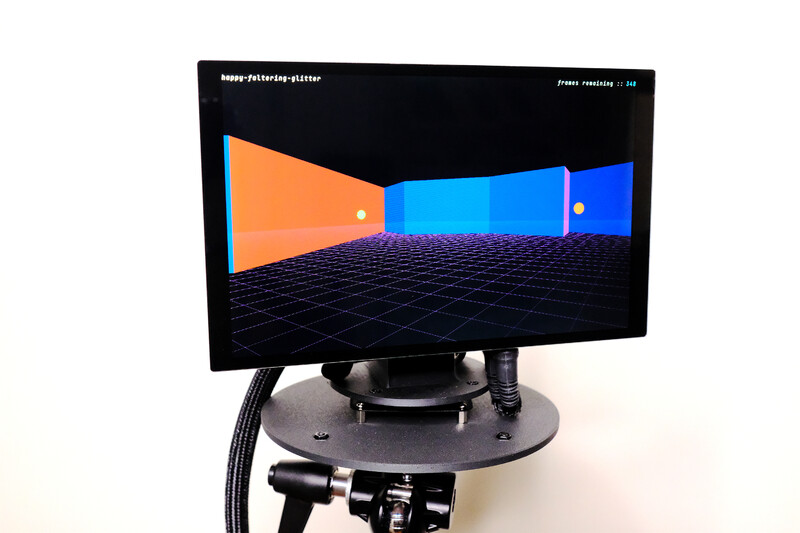
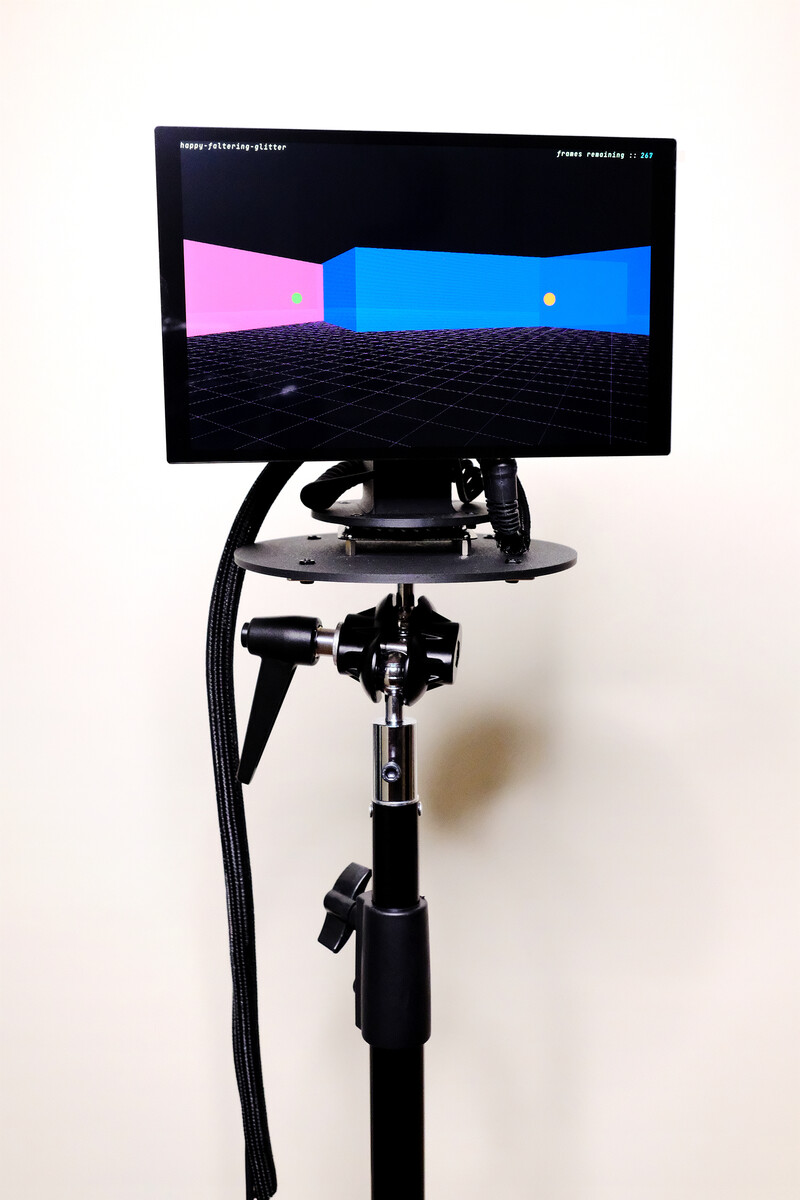
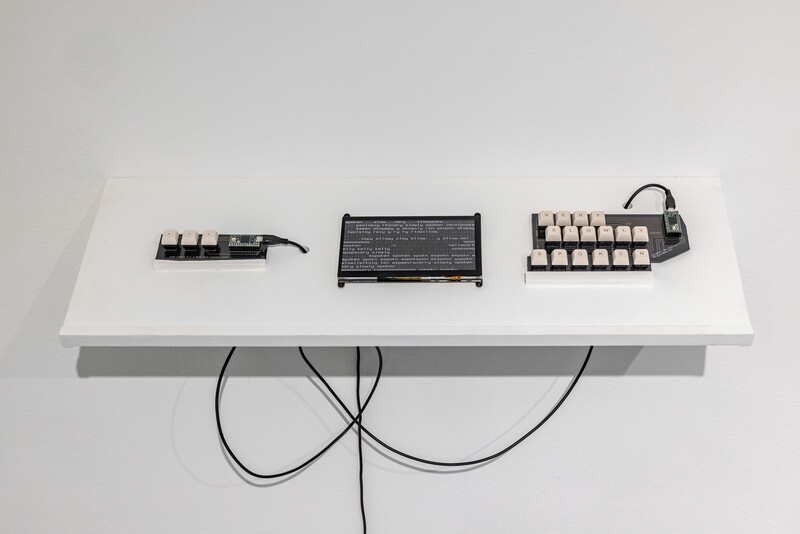


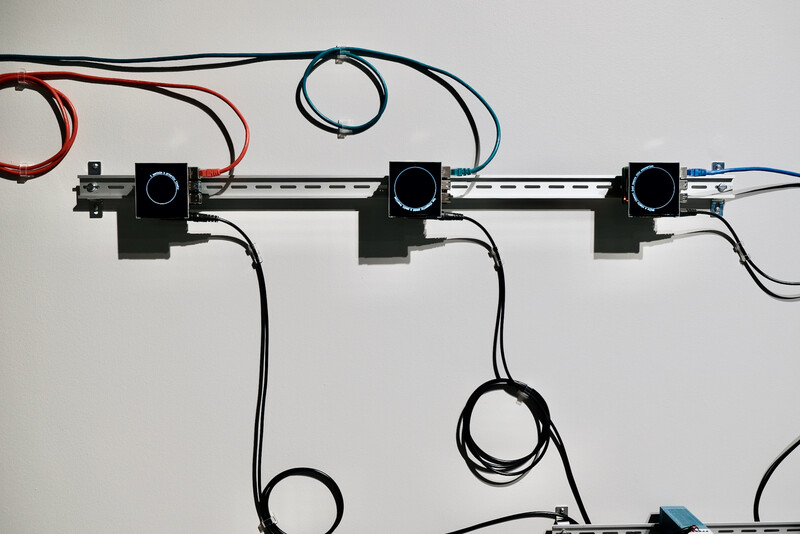
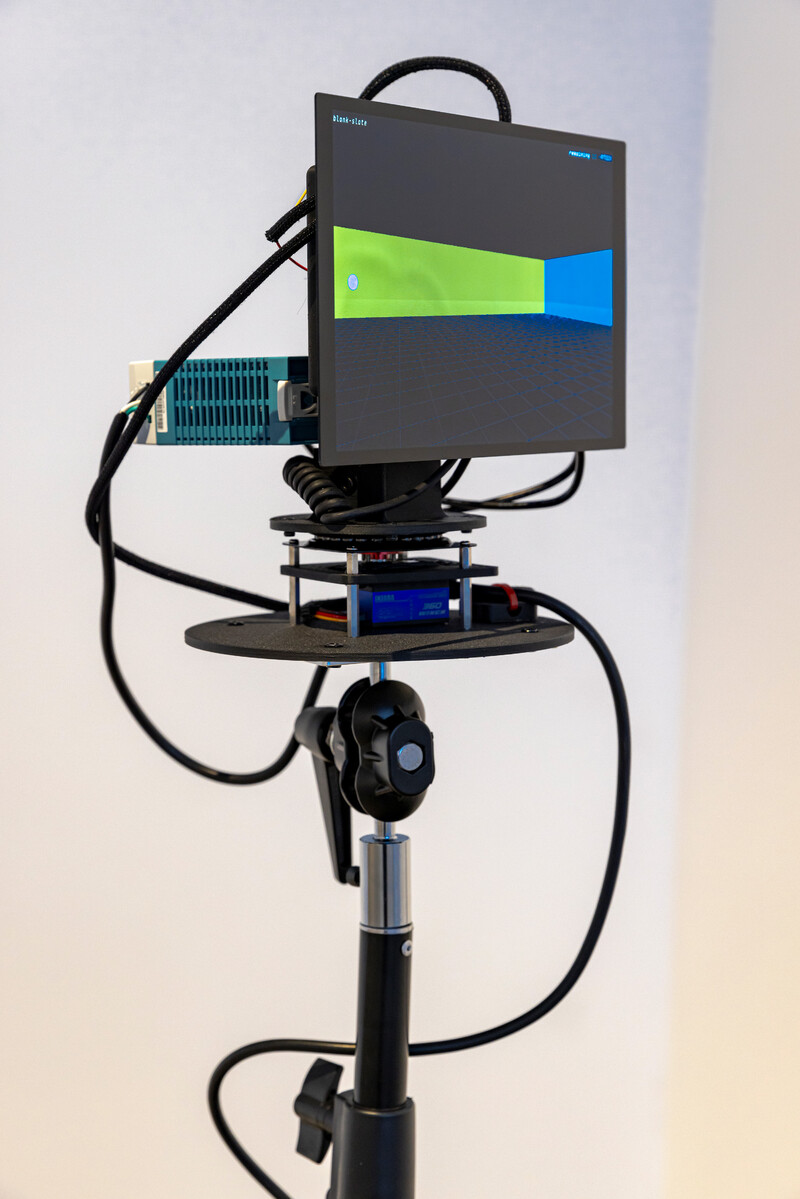
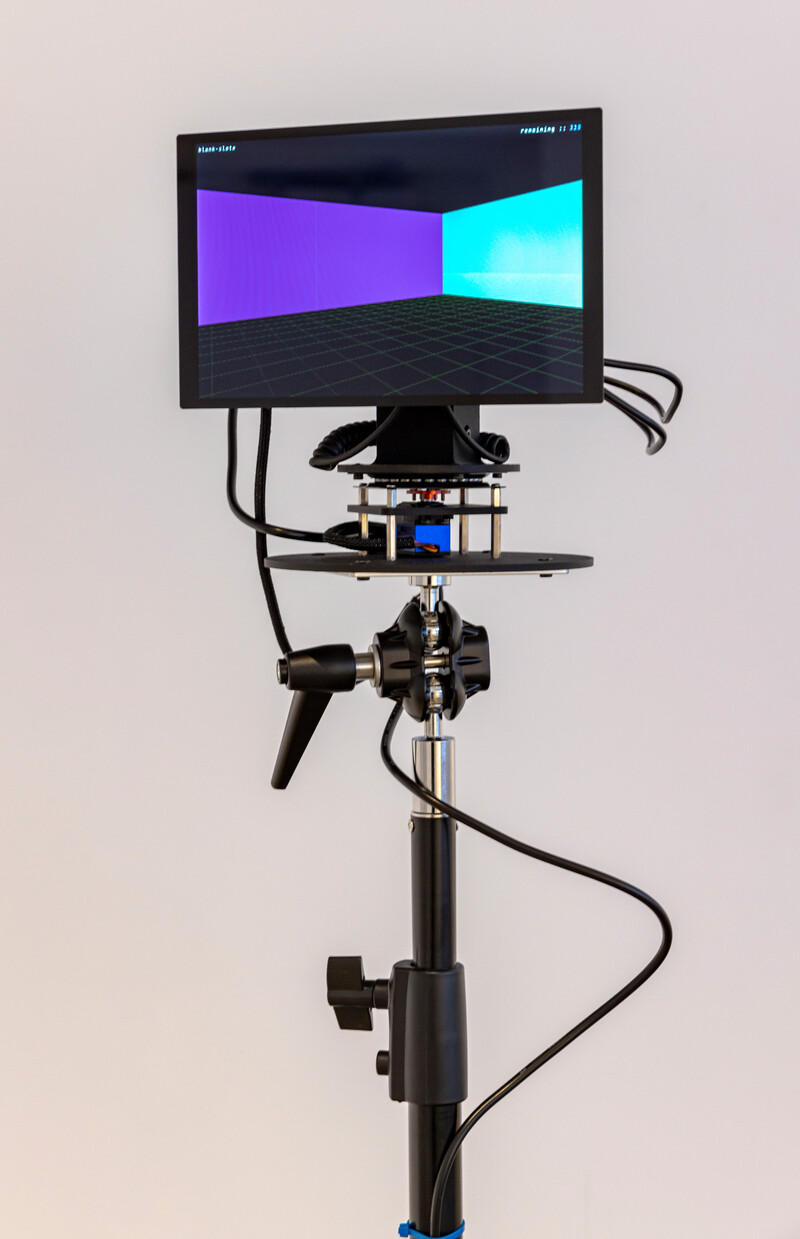
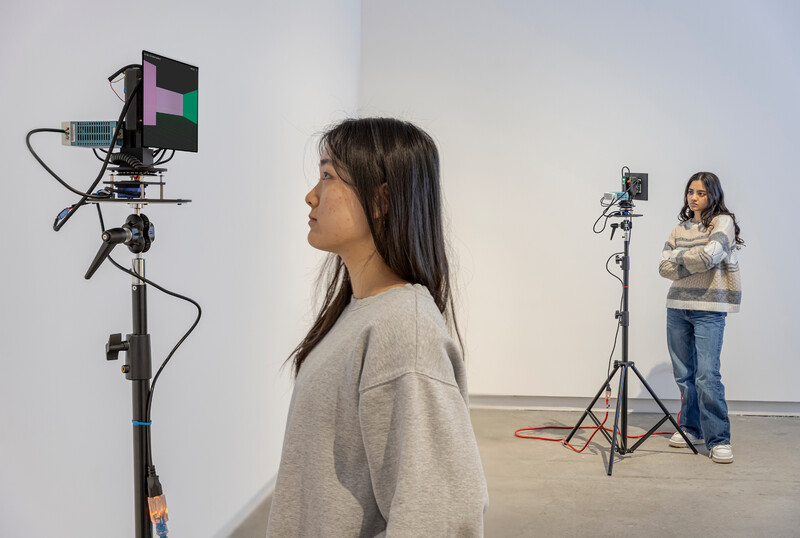
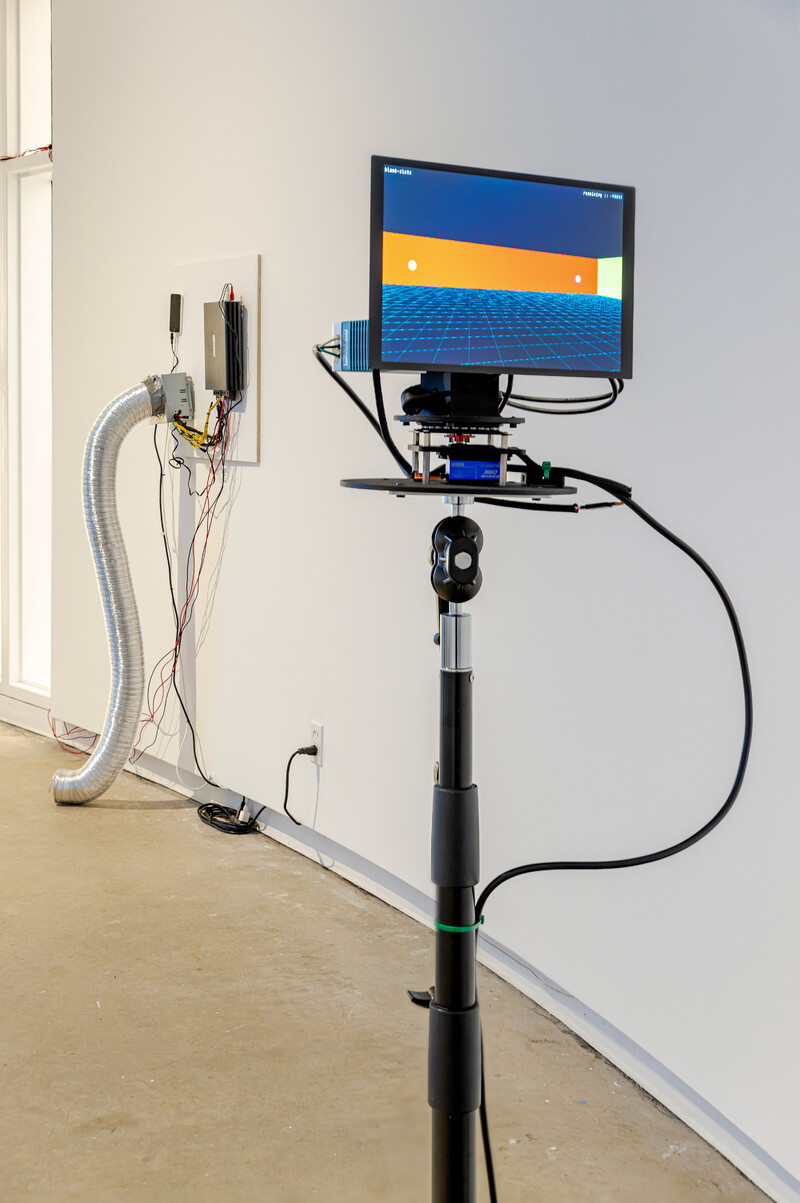
Imaginary Volumes
Imaginary Volumes, newly commissioned for this exhibition, simulates the “art gallery problem” using artist-written software and consumer tech. A series of human-scale sculptures serve as proxies for museum guards, outfitted with screens that mimic a surveillant gaze and depict renderings of the gallery. Rather than replicating surveillance technologies, however, Nish-Lapidus inflects his work with flaws and hubris, informed by histories and limitations of computer-aided design.
Nish-Lapidus has created an iterative simulation of an art gallery; in each instance, the gallery’s spatial volumes subtly shift and mutate. With each physical sculpture doubled in the virtual simulation to represent a “guard,” the simulation responds to keep apace with the unstable architecture. The sum effect is one of constant flux, highlighting the inadequacy of mathematic logic to capture the fluidity and nuance of reality.
Nish-Lapidus draws on literary and computational histories that cut across the grain of technological optimism, while adopting the aesthetics of early spatial rendering dating to the 1970s. Inspired by the labyrinthine structures of Jorge Luis Borges, the impossible architectures of Piranesi, and the apprehensions of technological theorist Joseph Weizenbaum, Imaginary Volumes presents the art gallery problem as an irresolvable clash between real and virtual space.

The Blackwood
University of Toronto Mississauga
3359 Mississauga Road
Mississauga, ON L5L 1C6
[email protected]
(905) 828-3789
The galleries are currently closed.
Facebook | Twitter | Instagram
Sign up to receive our newsletter.
The Blackwood is situated on the Territory of the Mississaugas of the Credit, Seneca, and Huron-Wendat.